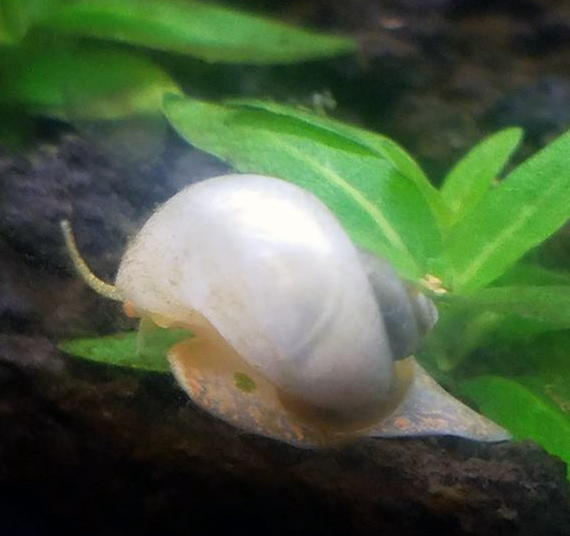|
Home News and Announcements! Our Study Organism Reproductive Biology A two-minute refresher on genetics. Hypothesis Methods, Phase (1) FAQs Methods, Phase (2) How I'd do it, but my wife won't let me. An open letter to the breeders and distributors. Download this entire website as a [pdf] document. 
The photo of the ivory mystery snail directly above is from an 11Apr17 post by Mr. Chris Smith on Snails, Snails, Snails.
The photo at the top of this page is from a 3Sept18 post by Ms. Jody Van Sickle.
|
The MSCG Project is a crowdsourced effort to understand the inheritance of color polymorphism in Pomacea diffusa,
the commercially-popular “mystery snail” common in home aquariums
worldwide. The project is coordinated by Dr. Rob Dillon, a
genetics professor recently retired from the College of
Charleston. Dr.
Dillon has almost 40 years of research experience working with the
genetics and evolutionary biology of mollusks.
Would you like to join the MSCG Project? Membership is open to everybody! All you need is:
- At least some experience in the home culture of mystery snails, or a willingness to learn.
- At
least one female* mystery snail of the color form usually called,
“ivory.” More would be better. Ivory mystery snails can be
recognized by their completely unpigmented body and shell – see the
photo below left. Notice the asterisk by that modifier,
“female.” See Point #5 in the section entitled “Reproductive
Biology” for more.
- Or newly-hatched
babies from an ivory mother in your home aquarium right now. If
that is the case, you’re way ahead of most of us. Hit the link at
left labelled "Methods, Phase (2)."
- At
least one aquarium or decent-sized culture vessel dedicated to your
ivory snail or snails. You can set this up according to your
personal preferences – size, water quality, temperature, filtration
method, and so forth. Feed your snail or snails whatever diet you
prefer. The only stipulation is that only your ivory snail (or
snails) are allowed in your dedicated tank. No fish or other
color forms of mystery snails! Plants are OK. And
(honestly) other species of snails (like Physa) are also OK. Not ideal, but we can live with them.
- You will need a camera or smartphone to photograph any offspring you may be able to hatch. Everybody likes baby pictures!
- I
will need your name and email address. We will communicate among
ourselves via email. Your intrepid coordinator does not text,
twitter, tweet, instachat or snapgram. He barely understands
Facebook and does not understand what “IM” means, at all. Please
email DillonR@fwgna.org if you need to communicate with me or call
843-670-8002 during regular business hours. I only understand
complete English sentences correctly spelled, capitalized, and
punctuated.
Ready to get started?
Hit these links, in this order:
- Our study organism
- Reproductive biology
- A two-minute refresher on genetics
- Hypothesis
- Methods, Phase (1)
- FAQs
- Email me, and introduce yourself!
|
 Welcome to the
Welcome to the Welcome to the
Welcome to the